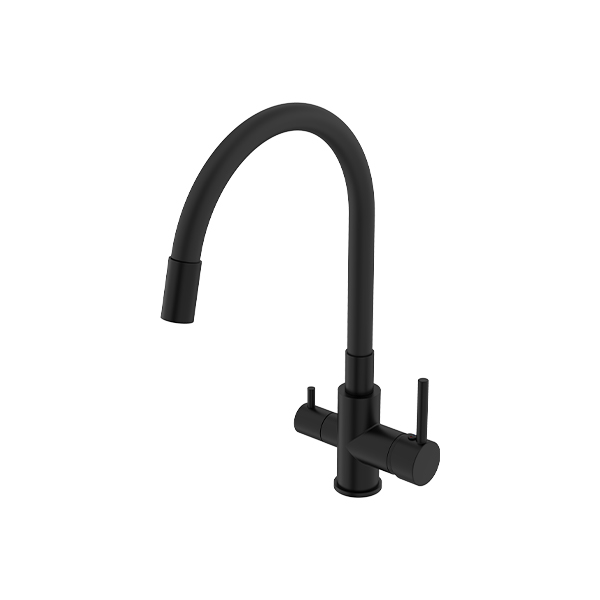Pull-Out Kitchen Mixer Faucets have become a popular choice in modern kitchens due to their versatility, convenience, and functional design. Understanding the production process of a Pull-Out Kitchen Mixer Faucet provides insight into the quality control, craftsmanship, and technology involved in creating these reliable fixtures. The production process can be divided into several key stages, each contributing to the final product's durability, appearance, and performance.

Material Selection
The production of a Pull-Out Kitchen Mixer Faucet begins with careful material selection. The main body is usually made from high-quality brass or stainless steel. Brass is preferred for its durability, corrosion resistance, and ease of machining. Stainless steel offers strength, rust resistance, and a polished finish. Other materials, such as rubber or silicone, are used for seals, gaskets, and hoses. Selecting the right materials ensures that the faucet can withstand frequent use, high water pressure, and exposure to cleaning chemicals without compromising functionality or aesthetics.
Casting and Forging
After selecting the materials, the main components of the Pull-Out Kitchen Mixer Faucet are formed through casting or forging processes.
Casting: Molten brass or stainless steel is poured into precision molds to create the rough shapes of the faucet body and spout. This process allows for intricate designs and uniform thickness.
Forging: Some components may be forged to improve their mechanical strength and density. Forging compresses the metal, reducing porosity and enhancing durability.
Both methods ensure that the faucet body is strong, reliable, and ready for further machining and finishing.
Machining and Precision Work
Once the rough components are formed, machining is performed to achieve precise dimensions and smooth surfaces. CNC machines and lathes are commonly used for this stage. Key points include:
Threading and Drilling: Necessary holes, threads, and connection points are accurately created to ensure leak-free assembly.
Surface Smoothing: Excess material is removed, and edges are polished to prevent rough spots that could affect functionality or aesthetics.
Fitting Check: Components are tested for proper fit with other parts, including the pull-out hose, cartridge, and spray head.
This stage ensures that each part meets strict tolerances, allowing smooth operation and reliable sealing.
Assembly of Components
The assembly stage is where the Pull-Out Kitchen Mixer Faucet begins to take shape.
Cartridge Installation: The ceramic or ceramic-coated cartridge is installed to control water flow and temperature.
Hose Integration: The pull-out hose is attached to allow flexible movement while maintaining water tightness.
Seal and Gasket Placement: Rubber or silicone seals are positioned to prevent leaks and ensure smooth operation.
Final Body Assembly: All components, including handles and spouts, are combined, and tightness is tested.
Proper assembly is crucial for the faucet's performance, ensuring that the pull-out mechanism operates smoothly and the water flow remains consistent.
Surface Finishing
After assembly, the faucet undergoes surface finishing to enhance appearance and durability. Common finishes include chrome plating, brushed nickel, or matte coatings. Key steps in surface finishing include:
Polishing: Removes any minor imperfections and prepares the surface for coating.
Electroplating or Coating: Provides corrosion resistance, aesthetic appeal, and easy cleaning.
Quality Inspection: Each faucet is examined for scratches, color uniformity, and surface defects.
Finishing ensures that the Pull-Out Kitchen Mixer Faucet not only functions well but also complements the kitchen's design.
Quality Control and Testing
The final stage involves rigorous quality control. Each Pull-Out Kitchen Mixer Faucet is tested for:
Leakage: Ensuring all connections are watertight under different pressures.
Flow and Temperature Control: Verifying smooth operation of the lever and cartridge.
Pull-Out Mechanism: Checking the hose extension, retraction, and durability.
Testing guarantees that only products meeting high standards are delivered to the market, providing users with reliable and long-lasting performance.

 English
English Español
Español русский
русский

